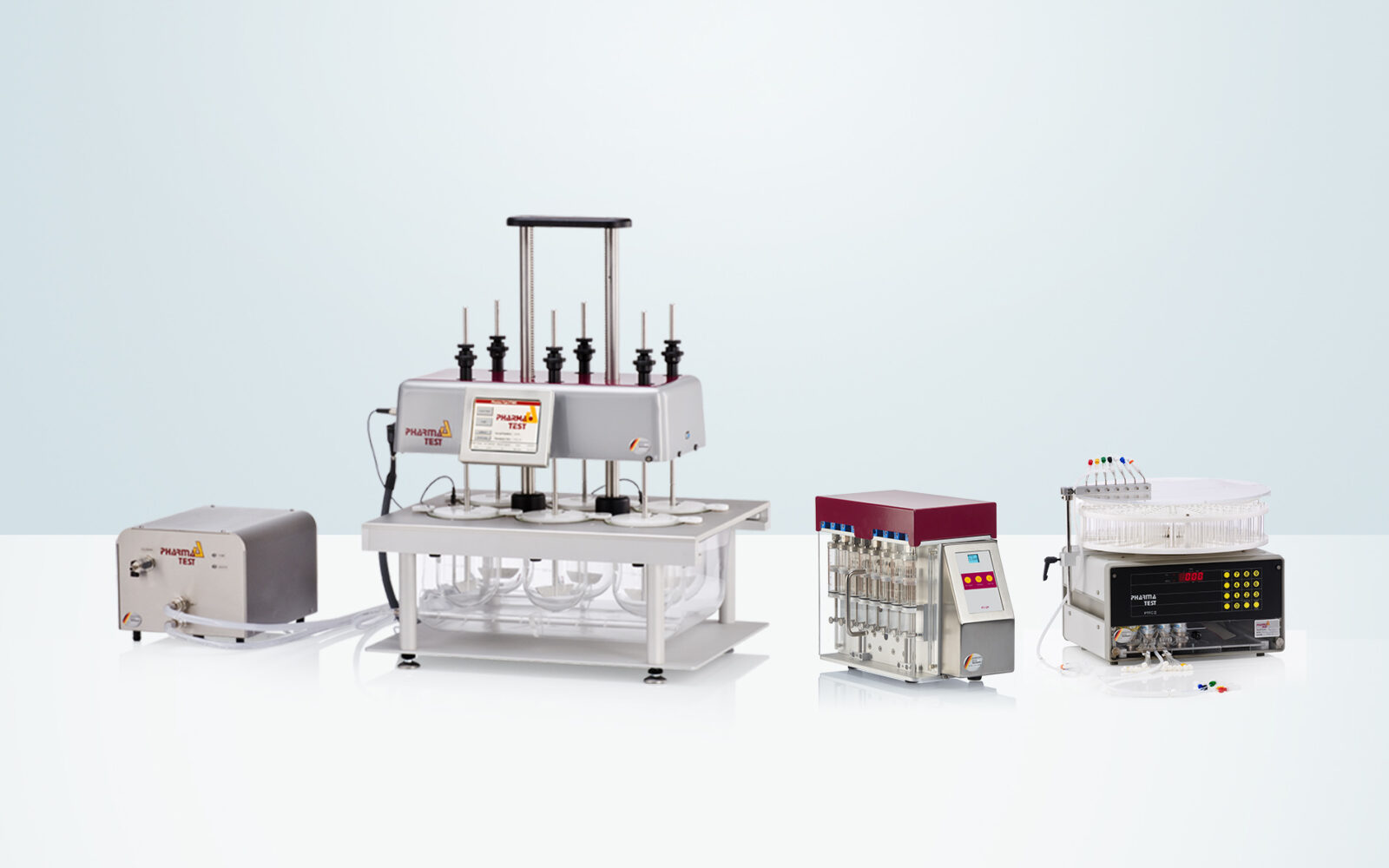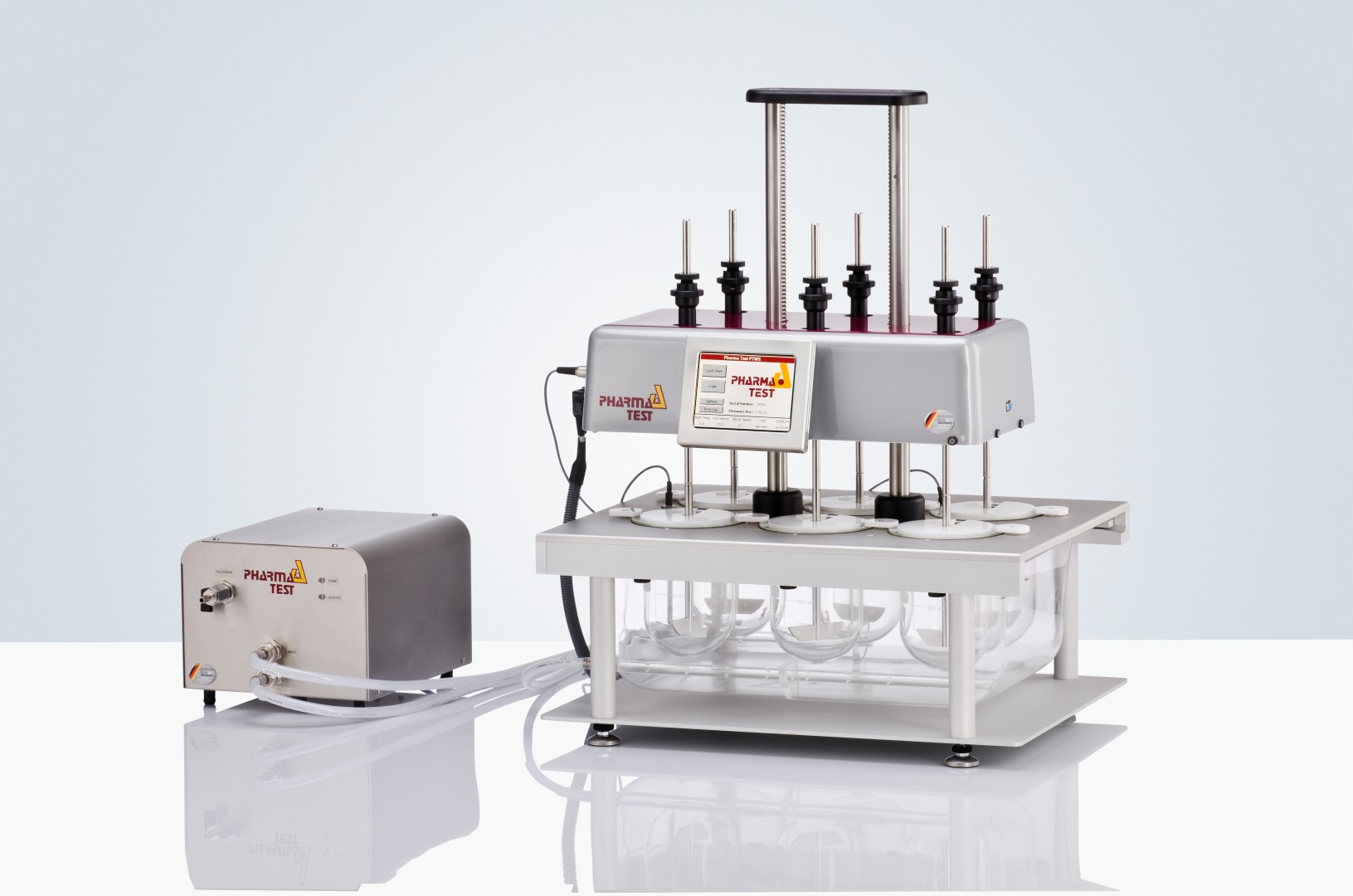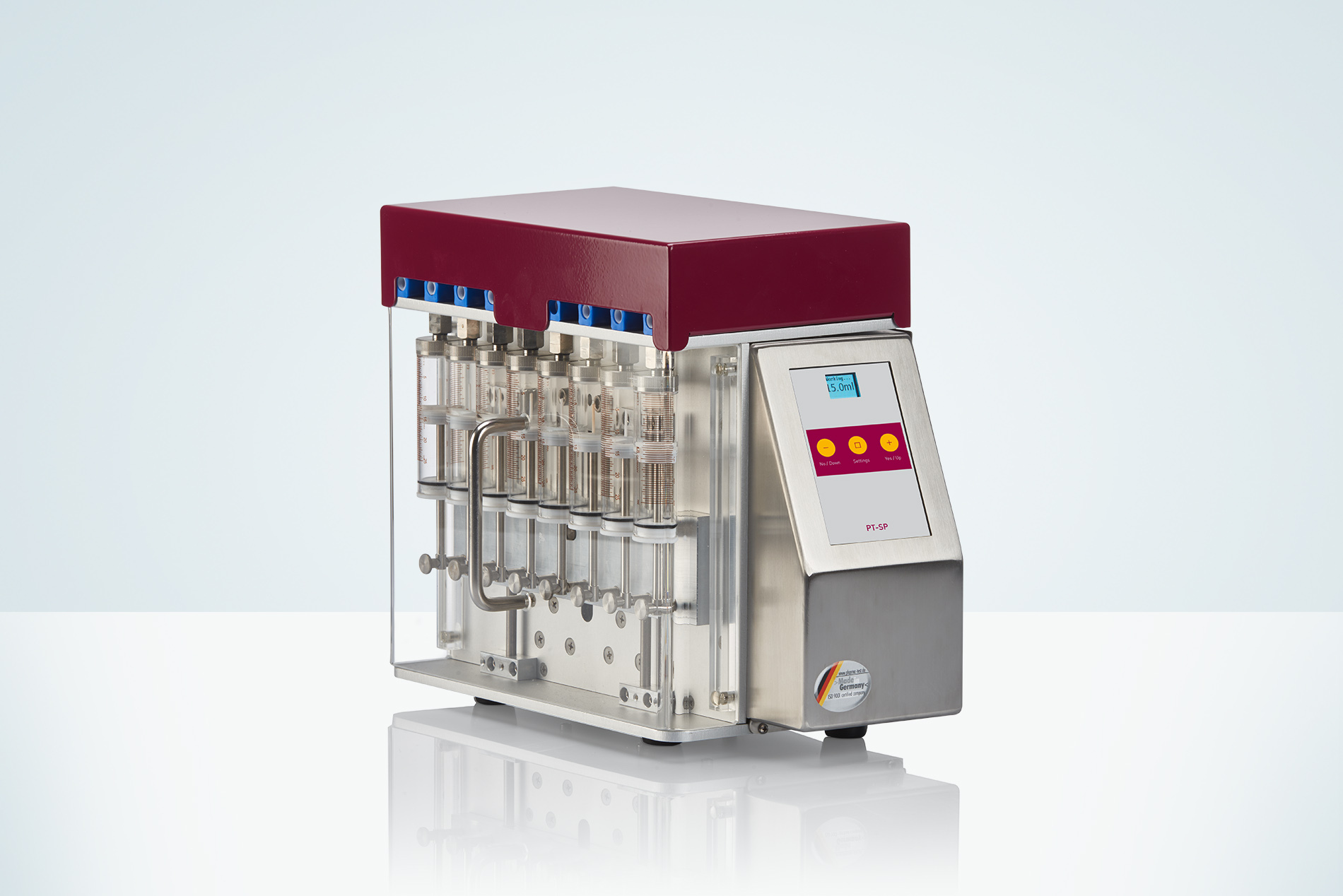DFC-120SP
Semi-Automated Dissolution Test System
The offline DFC systems include a fraction collector or an auto sampler which will
collect the sampled dissolution media. The semi-automated DFC-120SP system is composed of a PTWS 120D or PTWS 120S staggered stirrer start dissolution
bath with built-in individual vessel centering, full tubing installation in PTFE including in-situ sampling probes, a PT-SP8 syringe pump, and a PTFC-2/8 fraction collector. In this configuration the sampling probes are always
immersed into the media (in-situ). This procedure is widely used.
DFC-120SP
Semi-Automated Dissolution Test System
The offline DFC systems include a fraction collector or an auto sampler which will collect the sampled dissolution media. The semi-automated DFC-120SP system is composed of a PTWS 120D or PTWS 120S staggered stirrer start dissolution bath with built-in individual vessel centering, full tubing installation in PTFE including in-situ sampling probes, a PT-SP8 syringe pump, and a PTFC-2/8 fraction collector. In this configuration the sampling probes are always immersed into the media (in-situ). This procedure is widely used.
Semi Automated Tablet Dissolution Testing
Semi-automated in this case means auto sampling for a dissolution test instrument at pre-programmed times. Automating this step alone eases the dissolution job a lot. After all tablets have been dropped, the dissolution test proceeds automatically and all samples are simultaneously removed from each connected vessel. The sample is delivered into a connected fraction collector by a peristaltic-, or the PT-SP syringe pump. These systems do not require any external PC software to control them (the WinDiss ARGUS dissolution software package can be used optionally).
Automated Sampling
The perception of automation in dissolution testing differs greatly from user to user. The most labor intensive stage is taking samples at the specified time periods as found in the company SOP (Standard Operating Procedure). This involves the removal of 6 samples according to the USP/EP and most other Pharmacopoeia, there is often a requirement for a fast or parallel start in most cases so that accurately timed sampling may be achieved. At this point the operator must also consider either replacing the collected samples volumes in the dissolution vessels or keeping an accurate record of the volumes taken from each vessel so as to be able to calculate the true concentrations of subsequent samples.
The pumps available are either peristaltic, piston pumps, or syringe pumps. The PT-SP syringe pump as well as the CAT valve-less piston pump will give first class accuracy in terms of volume removed and refilling from and back to the system when samples are taken. Although the quality of the peristaltic pumps available today has vastly improved, it must be stressed that the peristaltic pump is still working with flexible tubing and should be qualified at the start of each determination to make sure that the flow rates are identical for each channel and that the tubing itself is in overall good condition. A good tip for long tubing life is to always release the pressure rollers from the tubing either overnight or whenever the system is left for extended periods of time and not in use.





